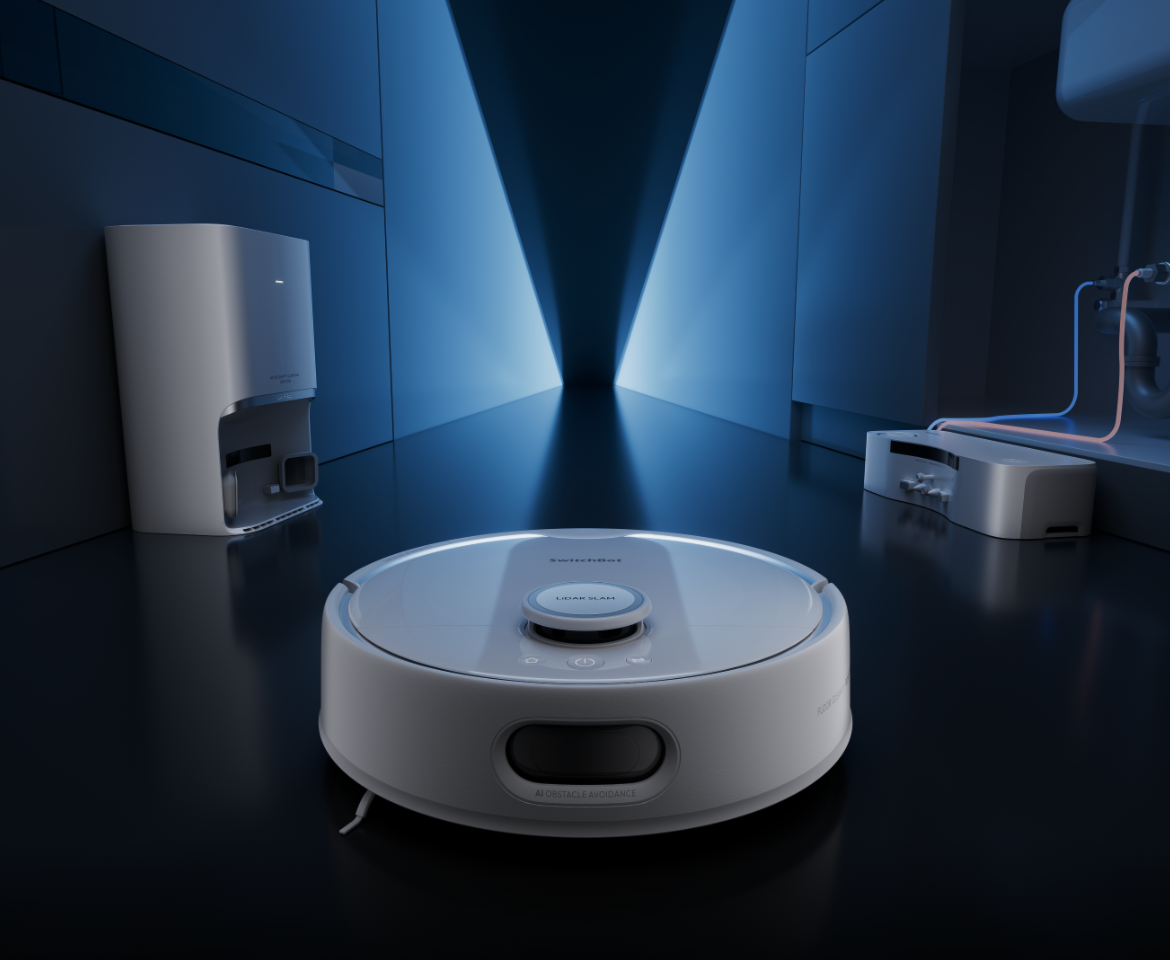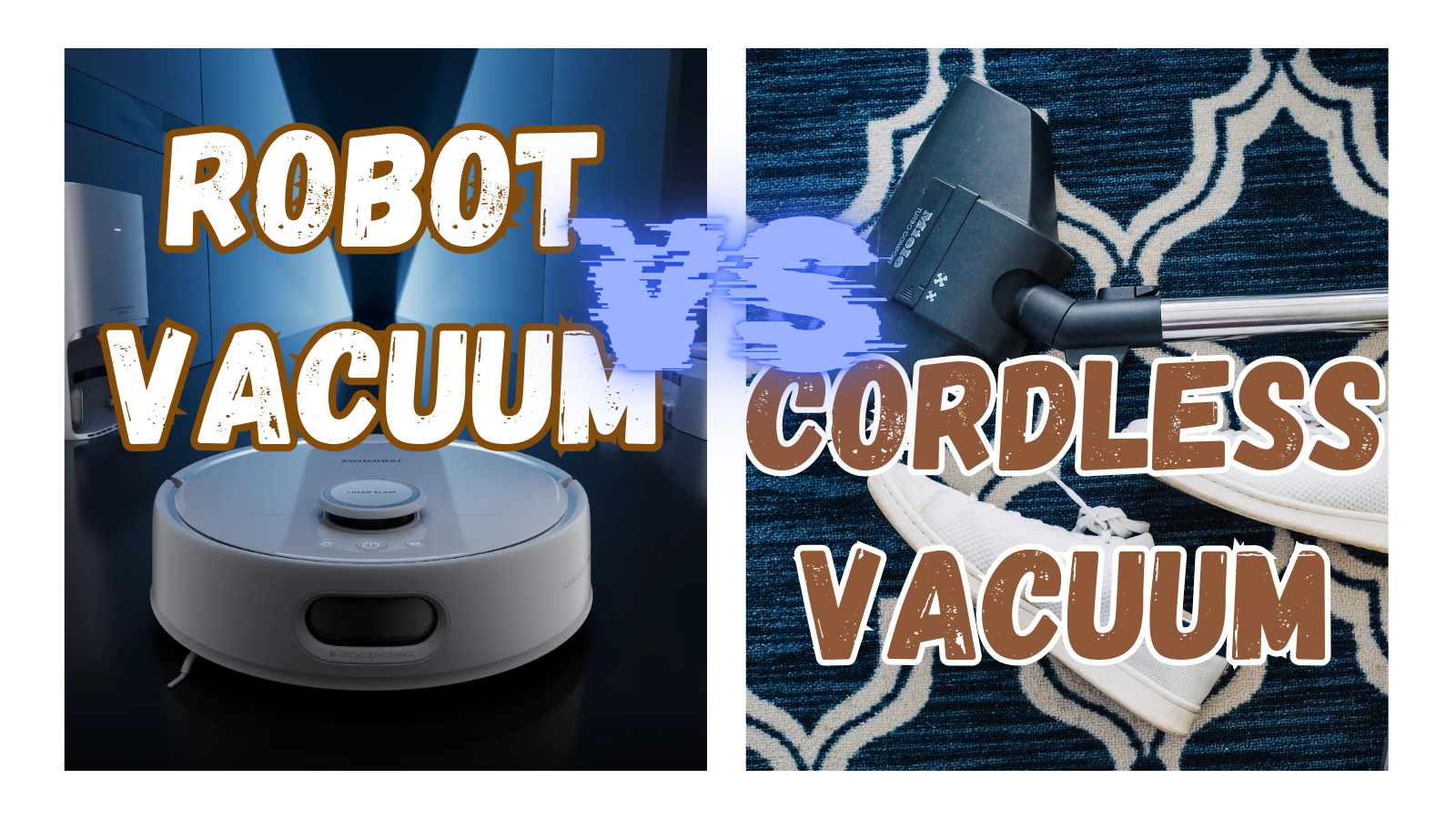What is a robot vacuum?

A robot vacuum is essentially a hands-free, battery-operated vacuum cleaner that's designed to simplify household cleaning. Resembling a large disc, it is equipped with sensors, motors, and intelligent programming to navigate and clean floors autonomously.
The technology behind robot vacuums.
-
Navigation and mapping: Robot vacuums come packed with an array of sensors that help them detect and navigate around obstacles like furniture, walls, and stairs. These sensors also prevent the vacuum from getting stuck or falling off the edges. The more advanced models create a digital map of your space, ensuring they clean every accessible area without repeating locations unnecessarily.

-
Scheduling and self-Charging: One of the smartest features of robot vacuums is their ability to work on a schedule set by you. You can program them to clean at specific times, such as when you're at work or asleep. Once their cleaning cycle is complete or their battery is low, they automatically return to their docking station to recharge, readying themselves for the next cleanup without any intervention needed from you.

-
Floor adaptability: Modern robot vacuums are quite adept at adjusting to different floor types. They can transition from hardwood floors to rugs and carpets without missing a beat, often altering their suction power and brush height automatically to get the best clean on each surface.
Advantages of robot vacuums.
-
Automatic clean-up: Robot vacuums are all about convenience. With their help, maintaining clean floors becomes an automated task that doesn't require daily attention. This is ideal for those who have busy schedules or prefer spending their time on activities other than vacuuming.
-
Ease of use: These devices are typically user-friendly; just charge them up, press start, and let them do their thing. There's no heavy lifting involved, no cords to trip over, and no need to move furniture around, making them a good option for people with mobility issues or those who find traditional vacuuming physically demanding.
-
Smart home compatibility: For those who love smart gadgets, many robot vacuums can be seamlessly integrated into smart home systems. This integration allows for voice commands through virtual assistants like Amazon Alexa or Google Assistant, or control through apps on smartphones, adding an extra layer of convenience to their operation.
What is a cordless vacuum?

A cordless vacuum cleaner is a portable, battery-powered device that allows you to clean your home without the limitations of a power cord. It is designed for convenience and ease of use, often coming in a lightweight design that can be carried from room to room or even outside the house.
A closer look at cordless vacuum technology.
-
Battery life and recharge times: The heart of a cordless vacuum is its battery. Battery life varies across different models, with some offering up to an hour of cleaning time before needing a recharge. Recharge times can also differ, ranging from a quick couple of hours to an overnight charge to restore full power. Advancements in battery technology continue to improve both the lifespan and efficiency of these vacuums.

-
Versatility with attachments and configurations: What makes cordless vacuums stand out is their adaptability. Many come with a set of attachments like crevice tools, upholstery brushes, or even mop heads, making them capable of tackling various cleaning tasks beyond just floors. They can often convert into handheld vacuums for more detailed work like cleaning car interiors or furniture.
Advantages of using a cordless vacuum.
-
Flexibility in cleaning tasks and locations: Without a cord to tether you to a wall socket, you have the freedom to move around unimpeded, making it easier to clean hard-to-reach places. You can take a cordless vacuum anywhere - from your living room to your car parked outside.
-
No cords for easier maneuverability: Cordless designs eliminate the trip hazard of a cord and the frustration of unplugging and plugging in as you move through your home. This lack of cords greatly enhances maneuverability and reduces the time spent on cleaning.
-
Often lighter and more compact: Cordless vacuums tend to be lighter and smaller than traditional uprights, making them ideal for quick cleanups and for use by people who might find heavier models cumbersome.
Performance comparison: Robot vacuum vs Cordless vacuum.
Deciding between a robot vacuum and a cordless vacuum involves looking closely at how they perform in the real world. Here’s a breakdown of what you can expect from each in terms of cleaning efficiency, battery life, noise levels, and maintenance.
Assessment of cleaning efficiency.
-
Robot Vacuum: Robot vacuums are built for consistency, designed to maintain cleanliness with regular, scheduled runs. They're efficient at covering entire floor areas methodically, especially if they map the environment.
-
Cordless Vacuum: The efficiency of a cordless vacuum is largely dictated by the user. You can target specific areas quickly or give your whole home a thorough clean. Their direct suction and manual control often allow them to pick up more debris on the first pass compared to robot vacuums.
Battery life and energy usage evaluation.
-
Robot Vacuum: They usually work for about an hour or two before needing to recharge, and some automatically return to their charging docks. This self-sufficiency contributes to their energy efficiency, as they only activate based on schedules.
-
Cordless Vacuum: With these, battery life is critical since it limits how much area you can clean at one time. Most models offer 20-60 minutes of runtime, which might require recharging before cleaning larger homes. They generally consume more energy during use due to their powerful motors.
Noise level analysis and potential disruption.
-
Robot Vacuum: Most robot vacuums operate at lower noise levels than traditional vacuums, making them less disruptive. You can even run them when you’re not home, further reducing the impact of any noise.
-
Cordless Vacuum: These tend to be louder than robot vacuums, as they often have stronger motors and lack the insulation found in larger, corded models. The noise is temporary, though, as they're used for shorter periods.
Maintenance and ease of repair.
-
Robot Vacuum: Maintenance typically includes emptying the dustbin, cleaning filters, and occasionally detangling brushes. Repairs can be complex due to the sophisticated technology inside, often requiring professional service, which can add to the lifetime cost.
-
Cordless Vacuum: Simple and straightforward to maintain, cordless vacuums need regular emptying, filter cleaning, and sometimes brush cleaning. Many users can handle basic repairs themselves, like replacing a battery or filter, keeping costs lower over time.
When comparing these aspects of robot and cordless vacuums, consider what performance factors matter most to you—whether it's the hands-off approach of a robot vacuum or the powerful and direct cleaning of a cordless model. Understanding these nuances will ensure you choose a vacuum that aligns with your expectations and cleaning habits.
Making the decision: Which one fits your needs?
Choosing the right vacuum cleaner hinges on your lifestyle, home environment, and cleaning preferences. Here’s a guide to understanding when a robot vacuum might be the best choice for you, situations that could favor a cordless vacuum, and how you might use both to achieve a well-rounded cleaning routine.
When a robot vacuum is the better choice.
-
Ideal for Regular Maintenance: If you value consistent cleanliness and prefer the floors to be regularly tended to without your intervention, a robot vacuum is a match. It's great for daily dust and debris management.
-
Busy Lifestyles: For those with packed schedules who can't find the time to vacuum frequently, a robot vacuum can save precious time and effort.
-
Single-Level Homes: Robot vacuums excel in spaces without stairs, as they can navigate flat areas autonomously and efficiently.
-
Minimalist Spaces: Homes with a simple layout and fewer obstacles allow robot vacuums to perform at their best.
-
Health Considerations: Individuals with mobility issues or conditions that make traditional vacuuming difficult may find the automation of a robot vacuum a significant convenience.
When you should go for a cordless vacuum.
-
Targeted Cleaning Tasks: When you need to address specific spills or areas quickly, a cordless vacuum provides the control needed for spot cleaning.
-
Multi-Story Homes: The portability of a cordless vacuum makes it easy to move between different levels of your home.
-
Varied Surfaces: If you have a mix of different flooring types or need to clean upholstery, car interiors, or curtains, the attachments and adaptability of a cordless vacuum come in handy.
-
Deeper Cleaning Requirements: For homes that experience more substantial messes that require powerful suction—perhaps from pets or children—a cordless vacuum often offers the necessary oomph.
How to use both robot and cordless vacuums for a complete cleaning plan.

-
Daily Dust Management: Use a robot vacuum on a daily or every-other-day schedule to keep dust and pet hair under control.
-
Detailed Weekly Cleanings: Once a week (or as needed), bring out the cordless vacuum for a thorough cleaning session, tackling areas the robot can't reach, such as stairs, furniture, or car interiors.
-
Seasonal Deep Cleans: While daily and weekly routines maintain a base level of cleanliness, use the cordless vacuum for intensive deep cleaning sessions to deal with accumulated dirt in high-traffic areas or during seasonal events like spring cleaning.
-
Complementary Cleaning: Let the robot handle open spaces while you focus on using the cordless vacuum for edges, corners, and crevices where robots may not clean as effectively.
By assessing these factors and considering how each type of vacuum can serve your needs, you should be able to make a decision that contributes positively to your cleaning regimen. Remember, the goal is to find a solution that simplifies your life and ensures your living space remains clean and comfortable.
Final thoughts.






